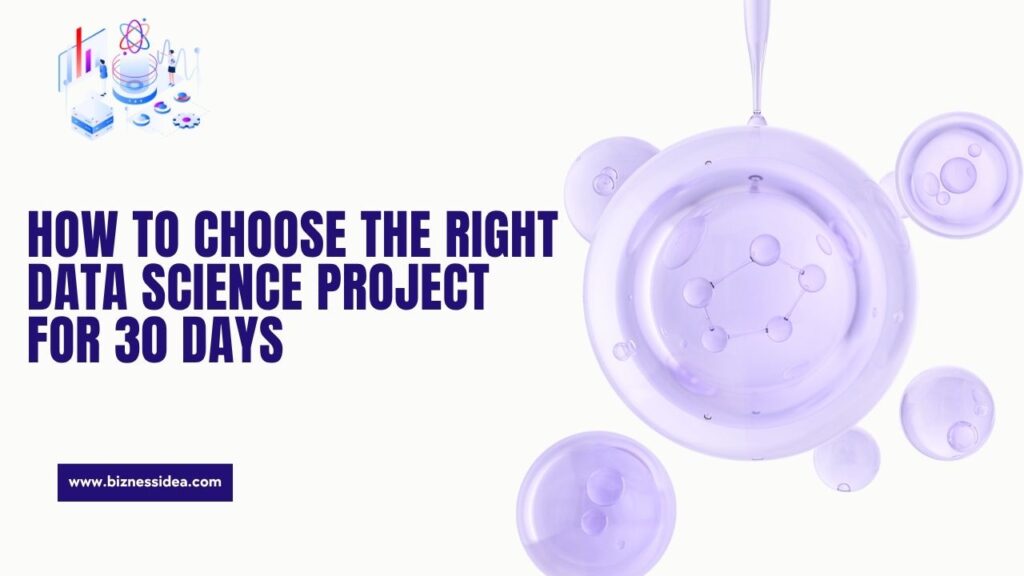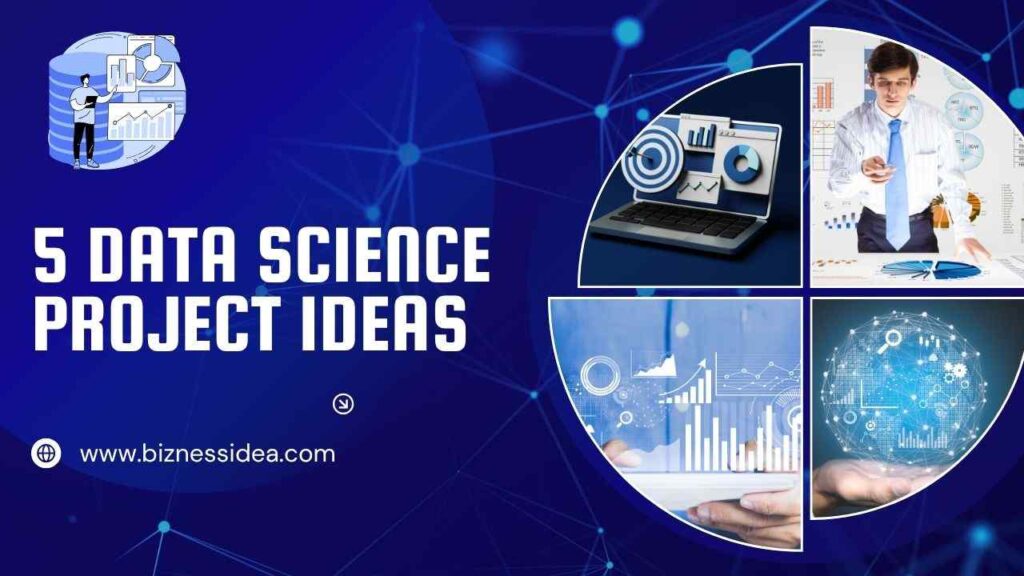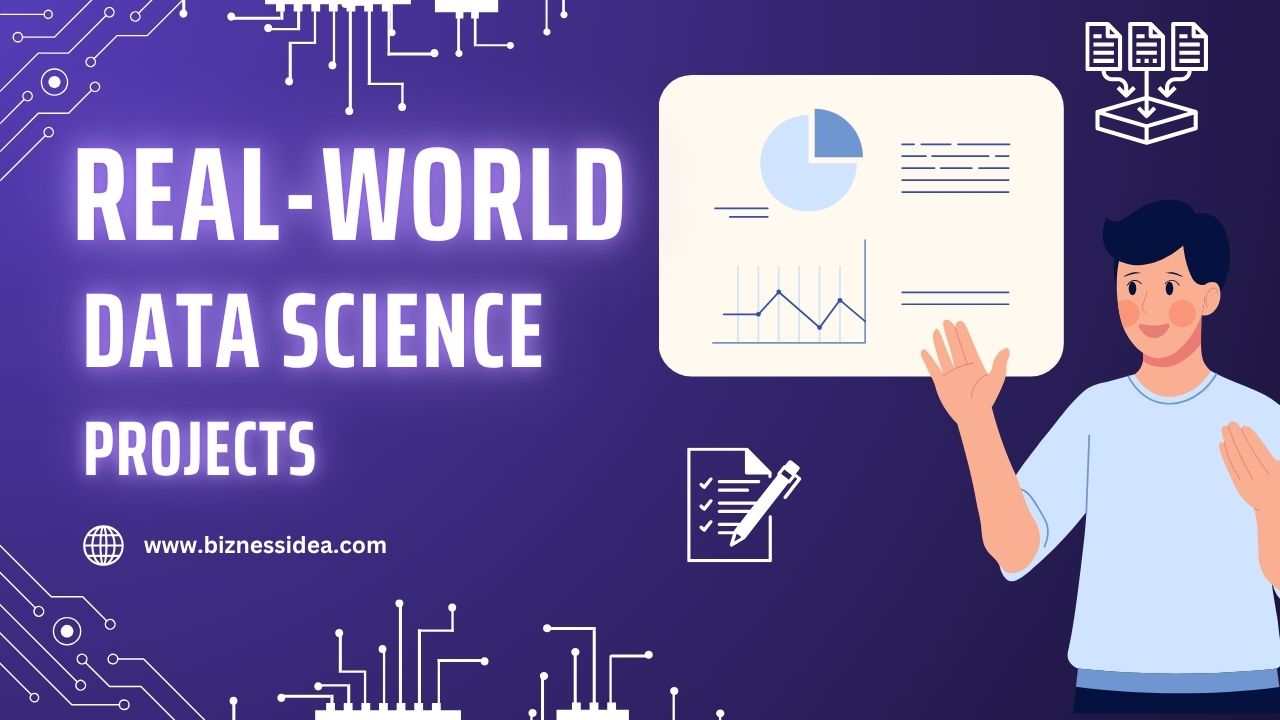If you’re looking to sharpen your skills or build something meaningful fast, data science projects done well can be game changers. In this article, you’ll discover real-world data science projects you can realistically build in 30 days — ideal for students, aspiring AI engineers, startup founders, or small business owners in India who want to showcase impact.
Whether you’re new to the field or already have some experience, these project ideas (and the process behind them) can help you build a portfolio, learn by doing, and position yourself as someone who solves real problems — not just runs tutorials.
Why 30 Days? The Advantage of Time-boxed Data Science Projects
Many learning resources suggest long, open projects — but a 30-day timeline forces focus, prioritisation, and completion. It ensures you don’t drift into endless feature creep.
A structured, time-boxed approach has these benefits:
- You finish projects and show them — critical for a data science portfolio
- It replicates real work pressures — delivering under constraint is a key skill
- You can iterate: do three 30-day projects a year, each more ambitious
In fact, communities run 30-day data science challenges (e.g. DataSciencester) to help learners build habits and tackle real problems daily.
Also, many guides emphasize the importance of telling a story with your project — you’ll do that best if you finish, refine, and present.
How to Choose the Right Data Science Project for 30 Days

Before you pick a dataset and get coding, set up a framework to choose wisely.
Align with domain + interest
You’ll stay motivated if the domain resonates — fintech, e-commerce, healthcare, IoT, etc. For example, a founder working in small retail might build a demand forecasting model for local shops.
Scope tightly
Don’t try to build a full system from scratch. Focus on one or two core components: data ingestion, modeling, dashboarding. Leave extras for later sprints.
Use public datasets + APIs
To save time, use reliable public datasets (Kaggle, UCI, government open data) or APIs (e.g., Twitter, Spotify, Google Trends).
Also, DataQuest’s list of 43 free datasets is a good resource.
Plan your 30-day roadmap
Divide into weekly milestones:
- Week 1 — data collection & cleaning
- Week 2 — exploratory analysis & feature engineering
- Week 3 — model building & validation
- Week 4 — visualization, deployment, writeup
This gives structure and clarity.
5 Data Science Project Ideas You Can Build in 30 Days

Here are real-world data science projects that are both meaningful and manageable within a month. Use these as starting templates — scale or simplify depending on time.
1. Sales Forecasting for a Small Retail Chain
- Use historical sales data from a store (or simulation)
- Build forecasting models (ARIMA, Random Forest, or XGBoost)
- Compare models, pick best, and deploy via a small Flask or Streamlit app
Why it works: Many small businesses would pay for this insight.
2. Deploy a Sentiment Tracker for Product Reviews
- Crawl reviews from Amazon / Flipkart / other platforms
- Use NLP (e.g. sentiment scoring, topic modeling) to classify reviews
- Build dashboard to show sentiment changes over time
This combines web scraping, NLP, and visualization — a complete chain.
3. Predict Student Performance or Dropouts
- Use education datasets or create your own from surveys
- Model using classification (logistic regression, decision trees)
- Provide recommendations: “Which students need intervention?”
Great for social impact / edtech niches.
4. Anomaly Detection in Transaction or Sensor Data
- Use datasets of credit card fraud or IoT sensors
- Build an unsupervised anomaly detection system (Isolation Forest, Autoencoders)
- Add an alert mechanism or visualization
A real challenge many companies face.
5. Recommendation System for Books, Movies, or E-commerce
- Use ratings data or user behavior logs
- Build collaborative filtering or content-based recommender
- Deploy a small service or embed recommendations in a mock website
Recommendation systems are among the most requested skills in real roles.
These projects all map to data science project ideas and are commonly suggested among top project lists.
Building Your Data Science Projects — Step-by-Step (30-Day Approach)
Here’s how you might execute one of these projects from day 1 to day 30.
| Phase | Key Activities | Deliverable |
|---|---|---|
| Days 1–7: Data & Exploration | Collect data, clean it, explore distributions, missing values | Cleaned dataset + EDA notebook |
| Days 8–14: Feature Engineering & Baseline Model | Create features, baseline model, error metrics | Baseline model + error metrics |
| Days 15–21: Model Tuning & Validation | Hyperparameter tune, cross-validation, ensemble methods | Final model + performance report |
| Days 22–27: Visualization / Dashboard / Deployment | Build a dashboard (Streamlit / Dash), small deployment, CLI / web demo | Live demo link or hosted app |
| Days 28–30: Writeup & Presentation | Document methodology, create slides or blog post, publish code | GitHub + blog post + presentation |
A 30-day plan ensures you stay on track and complete something meaningful.
How to Use Data Science Projects in Your Portfolio
Your finished projects should help you stand out in job applications or founder pitches.
- Publish on GitHub with clear README, notebooks, and code.
- Write a blog-style case study explaining your process, trade-offs, and business implications.
- Include visuals and dashboard screenshots.
- Highlight the results: error metrics, business gains, insights.
- For small business / B2B use cases, even a local demo can show how you solved a real problem.
Many guides stress that hiring managers scrutinise not just code but storytelling, domain fit, and deployment.
Challenges You’ll Face in Data Science Projects & How to Overcome Them
- Dirty or incomplete data — expect to spend more time cleaning. Use robust pipelines and imputation.
- Overfitting on small datasets — guard with cross-validation, simpler models first.
- Deployment complexity — if deploying is hard, at minimum host a Streamlit dashboard or static HTML.
- Time misestimation — always buffer 1–2 days for unexpected delays.
- Scope creep — limit additional features until after the 30-day deadline.
Conclusion
Completing data science projects in 30 days is more than a learning trick — it’s a way to prove you can deliver. Each project gives you a complete story: a business need, technical solution, results, and insights. It’s exactly what startups, companies, or recruiters look for when evaluating talent or solutions.
Start with one focused project, finish it fully, then repeat with increasing ambition. Over time, you’ll build a compelling portfolio of data science projects — one that demonstrates your ability to tackle real problems, not just toy datasets.
FAQs
Q1. What is a “data science project” in this context?
Ans. A data science project means a structured workflow: data collection, cleaning, exploration, modelling, validation, and presentation or deployment. Real-world projects often also include dashboards or APIs.
Q2. How many projects should I include in my portfolio?
Ans. Quality beats quantity. 3–5 well-executed, real-world projects are much stronger than a dozen shallow ones. Focus on diversity: forecasting, NLP, anomaly detection, recommendation, etc.
Q3. Can a beginner really complete one of these in 30 days?
Ans. Yes — if you scope it strictly and use public datasets/APIs. Many learners do 30-day challenges to build momentum.
Q4. Do I need strong math or statistics background to do these projects?
Ans. Basic understanding (regression, classification, probability) helps. Most of these projects rely more on implementation, domain thinking, and interpretation than cutting-edge theory.
Q5. Should I deploy the model into production?
Ans. Not always—deployment is a bonus. A live demo or dashboard (Streamlit, Flask) is often sufficient to show capability. If you can deploy, that’s even better.
Q6. Where can I find datasets for these projects?
Ans. Sources like Kaggle, UCI, government open data, and DataQuest’s “43 free datasets” list are excellent places to start.
Q7. How do I show these projects to employers or clients?
Ans. Host them on GitHub, write a blog case study, embed interactive dashboards, and clearly present your findings, trade-offs, and insights in the story.













